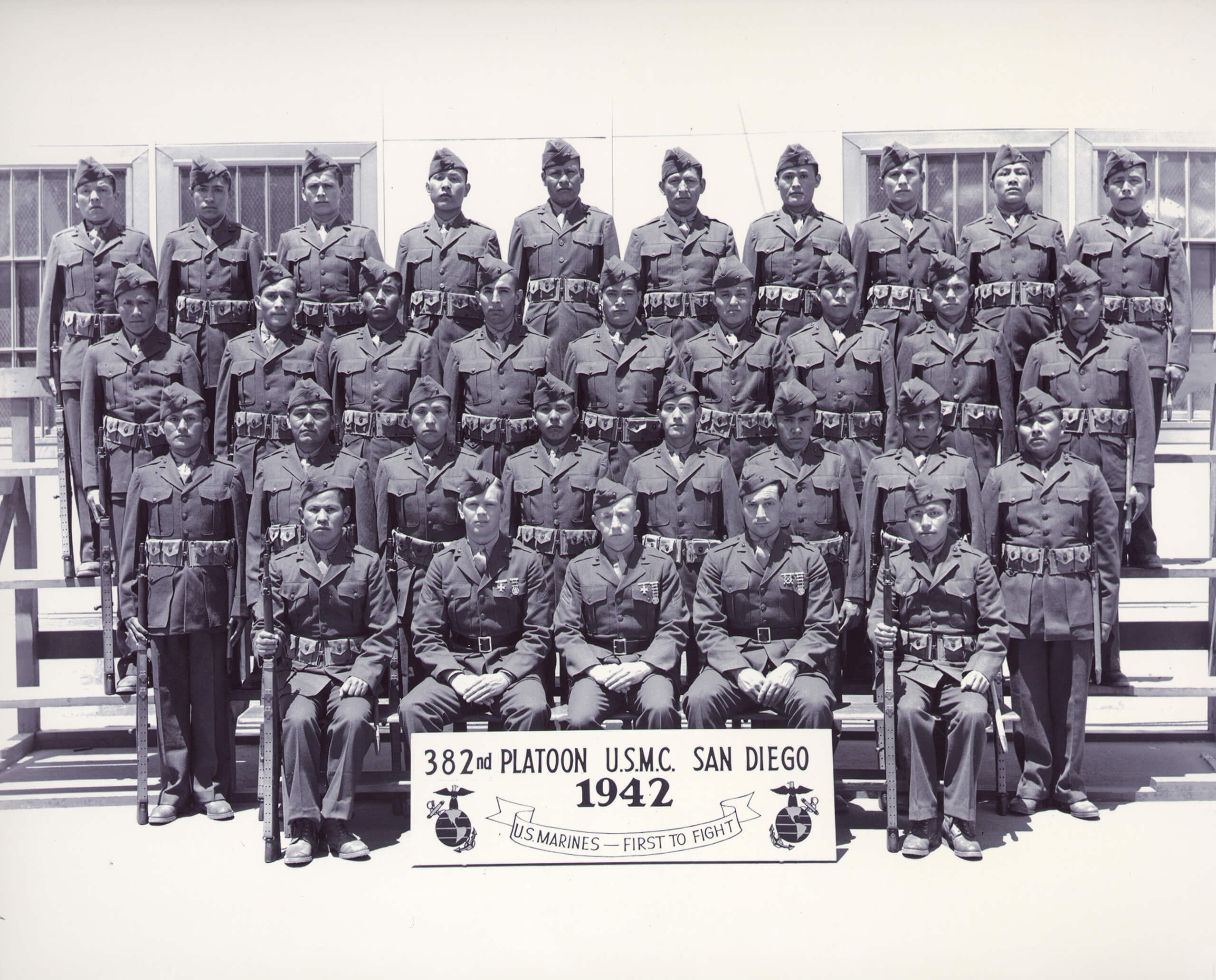Quick and accurate communication is important to the military, especially in war. Despite a nearly 70-year effort by the U.S. government to eradicate Native American languages, the Choctaw Telephone Squad used the Choctaw language to transmit secret tactical messages during WWI. It was instrumental in a successful surprise attack against the Germans.
After WWI, Germany and Japan sent students to the United States to study Native American languages and cultures, such as Cherokee, Choctaw, and Comanche. With the advent of WW II, the U.S. military was skeptical of using those languages which our enemies may have learned. Some Native Americans were used to conduct communications in their languages early in WWII, but they were not specifically recruited for that purpose. Historically, the Navajo Nation resisted compulsory western education, including boarding schools, as imposed by the government. Navajo families and society provided traditional and home education.
The complexity of Navajo linguistics, a traditionally oral Apachean Athabaskan language originating in Canada, allowed it to become an ideal choice to be used in code. The lack of documentation available for learning to speak the language and ability for the same words to mean multiple things based on sound yielded a code that remained unbroken throughout WWII.
In 1942, Phillip Johnston, the son of missionaries to the Navajo reservation, and a fluent Navajo speaker created a demonstration of Navajo message translators for the Marine Corps. A pilot program was instituted at Camp Elliott near San Diego in May 1942. Twenty-nine Navajos and Johnston were tasked with creating a code. Navajo words were used to represent the machinery of war. Names of birds were used for airplanes and a submarine was an “iron fish”. The initial code consisted of 211 vocabulary terms, which expanded to 411 over the course of the war.
Guadalcanal, Tarawa, Peleliu, Iwo Jima: the Navajo code talkers took part in every assault the U.S. Marines conducted in the Pacific from 1942 to 1945. They served in all six Marine divisions, Marine Raider battalions and Marine parachute units, transmitting messages by telephone and radio in their native language, a code that the Japanese never broke.
During the five-week battle for Iwo Jima, the six Code Talkers sent over 800 messages without a single error. Their signal officer Major Howard Connor said, “Were it not for the Navajos, the Marines would never have taken Iwo Jima.”
Code Talkers were so valuable that they were paired with bodyguards who operated the radio while the code talker gave, received and translated vital messages. The bodyguard was to protect the code talker and the code. They had implied orders to kill the code talker to prevent their capture and a breach of the code.
In 1942, there were about 50,000 Navajo tribe members. As of 1945, about 540 Navajos had served as Marines. From 375 to 420 of those trained as code talkers; the rest served in other capacities.
The heroic effort of the Navajo Marines remained classified until 1968. They were prohibited from divulging their experiences even to family. These same heroes were not able to vote in all 50 states until 1962.
In 1982, President Reagan declared National Navajo Code Talker Day on August 14th.

